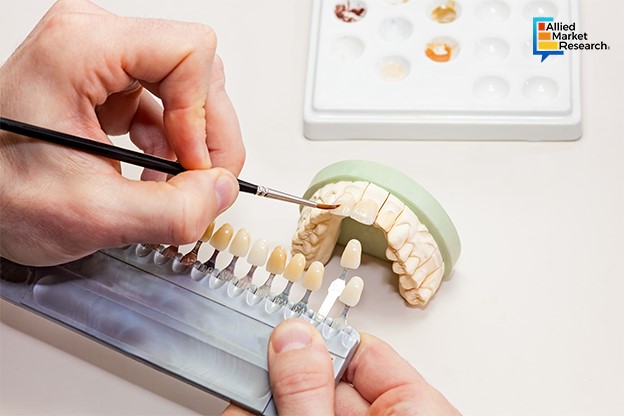Advancements in Composite Dental Restorative Materials: An Overview for Dental Professionals

26 May
2025
Highlights:
- Introduction
- Stronger, natural-looking, and easy-to-use composites
- Eco-friendly and tooth-protecting options
Composite dental restorative materials have become integral to modern dentistry, offering both functional and aesthetic solutions for tooth restoration. This article delves into the latest developments in composite materials, emphasizing their applications, innovations, and considerations for dental practitioners.
Evolution of Composite Materials in DentistryOver the years, composite materials have undergone significant transformations. Initially introduced as alternatives to amalgam fillings, composites now cater to a broad spectrum of restorative needs. The integration of nanotechnology has led to the development of nanofilled composites, which offer enhanced strength, wear resistance, and polishability. These properties make them suitable for both anterior and posterior restorations.
Hybrid composites, combining macro and microfillers, provide a balance between strength and aesthetics, making them versatile for various clinical scenarios. Additionally, advancements in resin formulations have resulted in materials with reduced polymerization shrinkage and improved color stability.
Innovations Enhancing Clinical OutcomesRecent technological advancements have significantly influenced the application and performance of composite materials. The adoption of Computer-Aided Design and Computer-Aided Manufacturing (CAD/CAM) systems allows for precise fabrication of restorations, enhancing fit and reducing chair time.
Bulk-fill composites have emerged as time-saving alternatives, enabling clinicians to place and cure larger increments without compromising the restoration's integrity. Moreover, the development of bioactive composites that release therapeutic agents, such as fluoride, offers the dual benefit of restoration and caries prevention. Advancements in curing light technology, particularly the shift to LED curing lights, have improved the efficiency and depth of cure, ensuring optimal polymerization of composite materials. The composite dental restorative material industry accounted for $474.00 million in 2023 and is predicted to gather a revenue share of $887.02 million by 2032, rising at a CAGR of 7.2% during 2024-2032.
Addressing Class V Lesions: A Conservative ApproachManaging non-carious Class V lesions, such as those resulting from abrasion or erosion, requires careful consideration. Conservative techniques emphasize minimal intervention while ensuring restoration longevity. Key strategies include proper surface preparation, selecting appropriate adhesive systems, and using flowable composites that accommodate tooth flexure.
Ensuring adequate isolation and moisture control during the procedure is crucial. Additionally, extending the etching time and applying multiple layers of primer can enhance bond strength, reducing the risk of restoration failure.
Embracing Sustainability in Dental MaterialsThe dental industry is increasingly focusing on sustainability. Manufacturers are developing eco-friendly composite materials derived from renewable resources, aiming to reduce environmental impact without compromising performance. These bio-based composites offer comparable durability and aesthetics to traditional materials. Furthermore, innovations in manufacturing processes, such as 3D printing, are enabling the production of restorations with minimal waste, aligning with the principles of a circular economy.
Recent Developments in Composite MaterialsThe field of composite dental materials is evolving steadily. In 2023, Ultradent introduced Transcend, a universal composite designed for high translucency and aesthetic appeal. Similarly, Shofu Dental launched FIT SA, a bioactive self-adhesive flowable composite, simplifying the restoration process for small cavities.
These new ideas show the industry's focus on making better tools, easier treatments, and healthier results for patients.
Wrapping upComposite dental restorative materials have undergone significant advancements, offering clinicians a range of options tailored to various clinical needs. By staying informed about the latest developments and integrating innovative materials and techniques into practice, dental professionals can enhance treatment outcomes and patient satisfaction.
For more information on the key growth drivers and investment opportunities in the market, contact our experts here!

Koyel Ghosh
Author’s Bio- Koyel Ghosh is a blogger with a strong passion and enjoys writing in miscellaneous domains, as she believes it lets her explore a wide variety of niches. She has an innate interest in creativity and enjoys experimenting with different writing styles. A writer who never stops imagining, she has been serving the corporate industry for the last five years.
Avenue: Entire Library membership of Allied Market Research Reports at your disposal
- Avenue is an innovative subscription-based online report database.
- Avail an online access to the entire library of syndicated reports on more than 2,000 niche industries and company profiles on more than 12,000 firms across 11 domains.
- A cost-effective model tailored for entrepreneurs, investors, and students & researchers at universities.
- Request customizations, suggest new reports, and avail analyst support as per your requirements.
- Get an access to the library of reports at any time from any device and anywhere.
Related Post
-
How are Submarine Cables Transforming Global Connectivity with Enhanced User Experience?
-
Endoscopy Procedures: Transformations in Techniques and Applications
-
AI-Powered Video Analytics: How the Product Actually Works for enterprises
-
Painting Robots: Transforming Precision Coating and Creative Applications
-
Innovations in Pharmacovigilance Systems Advancing Patient Safety
-
Understanding Edge Security: Keeping Data Safe Near the Source
-
Exploring the Use and Advancements of 3D Laser Scanners in Professional Applications
-
Reinforcing Industrial Controls with Smarter Tools and Training








